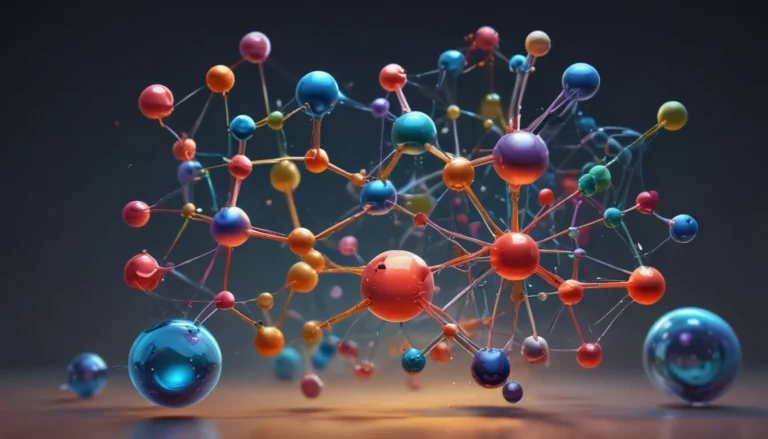A Note About Images: The images used in our articles are for illustration purposes only and may not exactly match the content. They are meant to engage readers, but the text should be relied upon for accurate information.
Are you curious about the fundamental concept of molality in chemistry and its significance in understanding the behavior of chemical solutions? Molality, denoted by the symbol “m”, measures the concentration of a solution in terms of the number of moles of solute per kilogram of solvent. Unlike molarity, which measures concentration in liters of solution, molality remains temperature-independent, making it a more accurate tool for scientific applications.
Key Takeaways:
- Molality measures solution concentration in moles per kilogram of solvent. It’s crucial for understanding freezing point depression, boiling point elevation, and other colligative properties in chemistry experiments.
- Molality is essential in chemical reactions, industrial processes, and even determining food safety in food science.
The Concept of Molality
Molality is a fundamental concept in chemistry that plays a crucial role in measuring the concentration of a solution. It provides a more accurate representation of concentration than molarity, especially in scientific applications where temperature changes are involved.
Molality Calculation
To calculate molality, you can use the formula:
Molality (m) = Moles of Solute / Mass of Solvent (in kilograms)
Molality in Colligative Properties
Molality is involved in various colligative properties, which depend on the number of particles present in a solution. These properties include vapor pressure lowering, osmotic pressure, and boiling point elevation.
The Relationship Between Molality and Freezing Point Depression
When a solute is added to a solvent, it lowers the freezing point of the solvent. The extent of freezing point depression is directly proportional to the molality of the solute in the solution.
Molal Boiling Point Elevation
Similar to freezing point depression, molality also plays a role in boiling point elevation. When a solute is dissolved in a solvent, it raises the boiling point of the solvent.
The Importance of Molality in Laboratory Experiments
Molality is crucial in laboratory experiments as it allows scientists to accurately measure and adjust the concentration of solutions. This precision is vital in fields such as analytical chemistry for accurate analysis.
Molality and Chemical Reactions
In chemical reactions, molality is used to determine the stoichiometry of the reaction by assessing the amount of reactants and products present in a specified amount of solvent.
Temperature Independence of Molality
Molality remains constant regardless of changes in temperature, unlike molarity. This feature makes it particularly useful in thermodynamic calculations and experiments.
Molality and Solubility
Molality also helps determine the solubility of a solute in a solvent. The solubility of a substance can be expressed in terms of grams of solute per kilogram of solvent, relating to the molality of the solution.
Molality Versus Molarity
While both measures concentration, molality and molarity differ in their units of measurement. Molality is expressed in moles per kilogram (mol/kg), while molarity is expressed in moles per liter (mol/L).
The Role of Molality in Industrial Processes
Molality is essential in various industrial processes such as chemical manufacturing, pharmaceutical production, and food processing. Utilizing molality allows for precise control and optimization of these processes.
Molality and Biological Systems
An understanding of molality is crucial in biological systems to determine the concentration of solutes in biological fluids like blood, urine, and intracellular fluids. This information is vital in medical diagnostics and research.
Molality and Osmosis
Osmosis, the movement of solvent molecules across a semipermeable membrane, is influenced by the molality of the solute. Changes in molality can impact the direction and rate of osmotic flow.
Molality and Electrolytic Solutions
Molality plays a significant role in determining the behavior of electrolytic solutions, where electrolytes dissociate into ions in solution. Their concentration affects various electrochemical processes, such as conductivity and electrode potential.
Molality in Environmental Studies
In environmental studies, molality is utilized to determine the concentration of pollutants in water bodies and other environmental samples. This aids in assessing the impact of contaminants on ecosystems and human health.
Molality in Food Science
Molality is crucial in food science for measuring solute concentrations in food products accurately. This knowledge is essential for recipe development, food safety, and product quality maintenance.
Molality and the Development of New Materials
Molality is a critical factor in the synthesis and development of new materials. Understanding the concentration of reactants and solvents is essential for controlling the properties and characteristics of the final product.
In conclusion, molality is a fascinating concept in chemistry that provides a deeper understanding of the concentration of solutes in solutions. By incorporating molality into our knowledge of solutions, we can better comprehend phenomena in chemistry and make precise calculations and predictions. Whether you’re a budding scientist or simply curious, exploring the world of molality opens endless opportunities for discovery and understanding. Remember to consider molality in your encounters with solutions, and dive deeper into its intriguing effects.
FAQs
- Q: What is molality?
-
A: Molality is a measure of the concentration of solute in a solution, expressed as the number of moles of solute per kilogram of solvent.
-
Q: How is molality different from molarity?
-
A: While molality measures concentration in moles of solute per kilogram of solvent, molarity measures the concentration in moles of solute per liter of solution.
-
Q: Why is molality important in chemistry?
-
A: Molality is crucial for accurate calculations and predictions, especially in situations involving temperature changes or non-aqueous solvents.
-
Q: How do you calculate molality?
-
A: Molality is calculated by dividing the moles of solute by the mass of the solvent (in kilograms). The equation is: molality (m) = moles of solute / mass of solvent (in kg).
-
Q: What are some practical applications of molality?
-
A: Molality is used in various fields like pharmaceutical manufacturing, food science, environmental science, and chemical engineering to accurately measure and control solute concentrations in solutions.
-
Q: Can molality change with temperature?
- A: No, molality remains constant regardless of temperature changes, unlike molarity which is temperature-dependent due to volume variations.
Spark your curiosity with molality and uncover the mysteries of chemistry’s wonders as you delve into its captivating landscape of knowledge and understanding. Trust in our commitment to quality and authenticity as you explore and learn with us.






